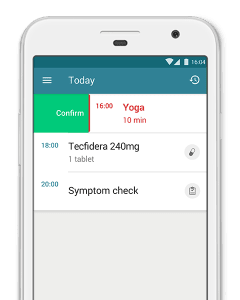Muscle pain can be one of the unwanted side effects of a sedentary lifestyle. Being inactive with little or no physical activity can make our muscles eventually become stiff and sore, but what if the stiffness on your neck and shoulders is a recurring condition? What if it’s most intense right after you wake up? If you are over 65 and have been having these symptoms for a while, you might need to go to a doctor. Polymyalgia rheumatica (sometimes also referred to as polymyalgia or PMR for short) is a relatively common muscle inflammatory condition that typically affects elderly people. The symptoms are easily overlooked and perhaps considered as natural signs of getting older. The truth is, it is a chronic disease that could develop into a potentially dangerous health condition.
What is myalgia?
Before we talk about polymyalgia rheumatica, let’s discuss myalgia. Myalgia is a medical term for muscle pain, usually caused by an inflammatory disorder. This could involve tendons, fascia, ligaments, and the soft tissues that connect muscles, bones, and organs.
What is polymyalgia rheumatica?
As the word poly suggests, polymyalgia rheumatica is a muscle ache that occurs in several parts of the body. The most common affected areas are the neck, shoulders, arms, lower back, and hips. Interestingly, the symptoms often appear suddenly, develop quickly, and are worse in the morning. Thus, people who live with polymyalgia rheumatica often complain about waking up with stiff and sore muscles.
This muscle inflammatory disorder is typically a disease of older people (age 65 and up). It is also more likely to affect women than men and Caucasians than other races.
Is polymyalgia rheumatica a serious condition?
It is difficult to say whether polymyalgia rheumatica is a serious condition. There may not even be a visible sign, such as swollen joints, on your body indicating that you have the disease. You only feel stiffness and soreness of your muscles, which makes it difficult to recognize this muscle disorder.
This condition could also be related to another health condition called giant cell arteritis or also known as temporal arteritis. It is a disease where the arteries, especially those at the temples (the side of the head), become inflamed. If it is not treated in a timely fashion, it may develop into vision problems or even blindness. Symptoms of giant cell arteritis may include, but are not limited to, headaches, scalp tenderness, and jaw pain.
What causes polymyalgia rheumatica?
The exact cause of polymyalgia rheumatica is unknown, but it is thought that a combination of genetics and environmental factors could play a role in causing the disease.
- Genetics – certain genes variations might increase the susceptibility
- Environmental exposure – infectious disease and viruses may contribute to the possibility. However, the studies on this factor are still inconclusive.
The stiffness and ache of the muscle may also be a part of the autoimmune rheumatic disease. This is a condition where the white blood cells in the body attack the joints and cause inflammation.
Can a blood test detect polymyalgia rheumatica?
Yes, a blood test can detect polymyalgia rheumatica. In fact, it is one of the recommended tests to make sure you get an accurate diagnosis of your muscle pain disorder, along with a physical exam and perhaps a biopsy.
A doctor may check the motion limitation of your body’s certain joints, such as neck, shoulder, and arms. If they suspect polymyalgia rheumatica, you may need to have a blood test to measure your erythrocyte sedimentation rate (ESR), and perhaps a test to check the C-reactive protein (CRP) levels as well. People with polymyalgia rheumatica usually have high levels of sedimentation rate and C-reactive protein.
As mentioned before, polymyalgia rheumatica is often associated with giant cell arteritis. To check if both conditions occur to you, your doctor may also perform a biopsy. This test is conducted by taking a small tissue sample of your temporal artery.
What is the treatment for polymyalgia rheumatica?
The typical treatment for polymyalgia rheumatica is corticosteroid drugs, such as prednisolone. Prednisolone, however, doesn’t cure polymyalgia rheumatica. It only relieves the symptoms and prevents muscle inflammation.
Prednisolone is fast-acting. Within a few days of treatment, you may notice the improvement of your condition. It is suggested not to stop taking the medication even if you already feel better. There may be a chance of the muscle disorder to return after the discontinuation of the medication. Suddenly stopping steroid treatment is also not recommended as it could lead to adverse effects. Discuss with your doctor your treatment plan to avoid any relapses or unwanted effects.
Additionally, prednisolone may have some side effects. Some people claim to experience changes in their mental state when they take this drug. Contact your doctor if you feel depressed, suicidal, anxious, confused, or start to hallucinate. Other side effects of prednisolone could include mood changes, stomach ulcers, increased appetite, and high blood pressure, among others.
What food should be avoided with polymyalgia rheumatica?
A balanced diet and a healthy lifestyle can also help reduce the muscle ache and the side effects of corticosteroids. Here are some of our suggestions:
- Avoid food with high levels of salt and refined sugars to prevent high blood pressure and weight gain
- Incorporate a healthy combination of colorful fruits and vegetables into your daily meal plan
- Take calcium and vitamin D to give extra supplements to your bones and muscle during the treatment
- Exercise regularly to strengthen your muscles and maintain your ideal weight
Consult with your doctor about the types of food, supplements, and exercises that are suitable for your condition.
Polymyalgia rheumatica may not be curable, but the severity of its condition can be reduced if you start the treatment early and adhere to it. This muscle disorder usually lessens after 2 to 6 years of treatment. In some cases, it may go away sooner.
Here are some other articles we think you might enjoy:



